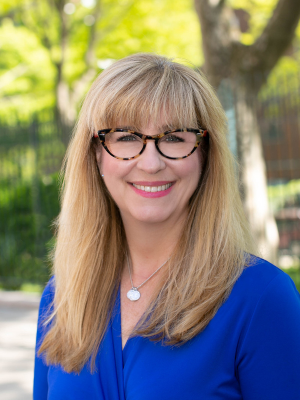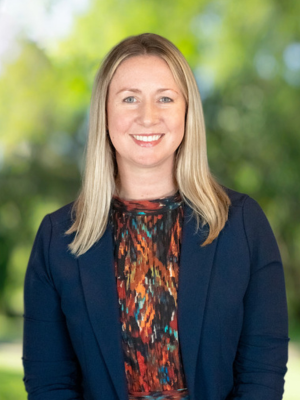 One power dynamic we rarely speak explicitly about is the one with yourself. Yet it’s arguably the most powerful relationship impacting your work, your leadership, and your life.
One power dynamic we rarely speak explicitly about is the one with yourself. Yet it’s arguably the most powerful relationship impacting your work, your leadership, and your life.
Are you still perceiving power as the ability to exert control over others – or to be subject to another’s control? What if you began to define power instead as the energy you cultivate when you move in alignment with your truth as you navigate the choices of your days?
In any given situation, do you remember to re-orient yourself towards your axis of personal power? Are you aware of how you leak power? Are you aware of how you build it? No matter the situation, you hold power. How you perceive and steward that power – especially with yourself – matters most.
Leading and empowering others begins with your ability to authentically lead and empower yourself. Here are seven ways to step into greater energetic mastery of personal power.
1) Disrupt the urge to dominate yourself.
In the patriarchal paradigm, achieving outcomes often means using pressure and domination inside of a hierarchy. When you internalize this, you dominate yourself to meet external demands – often at a profound cost to your well-being.
If you laud force over yourself to make things happen, you push beyond your limits, override your embodied truth, and live in chronic stress and anxiety, priming yourself for burnout. As Stephen Covey illustrates, you err when you prioritize the golden eggs (production) over the goose that creates them.
Empowering yourself means honoring how you treat yourself – mentally, energetically, and physically – rather than devaluing yourself. When you stop normalizing self-dominance, it become harder for others to dominate you and easier to discern toxic environments.
2) Start moving from where you stand now.
Often we displace our power to some future, idealized scenario.
You tell yourself that when you reach a certain title, goalpost, or milestone, you’ll finally manage your time better, assert yourself, relax, or set boundaries. If only something were different, you think, or if you attain that one qualification, then you could make the leap.
But any notion that displaces your personal power to a future scenario blinds you to the power you presently hold. It may even create a false story about what is necessary to move toward what you want, suspending your ability to act here and now.
Your ability to affect your experience never lies in the future. It is available in this moment.
3) Stop seeing giants around you.
“If a person continues to see giants, it means he is still looking at the world through the eyes of a child.” ― Anas Nin
In patriarchal culture, we are conditioned to see authority as external to ourselves. No matter how far you are in your career, do you still find yourself projecting disproportionate power onto certain people, especially those with prestigious titles or positions?
True power exists within you – it’s how you manage your energy and choices in every interaction. It can neither be granted nor taken away. It has nothing to do with role, reputation, or permission. It’s embodied from within.
When you see giants around you, you subtly give away your power. If you stopped, what might you be willing to speak, do, or risk?
4) Get honest about what holds power over you.
Unconscious thoughts and behaviors drive most of our daily interactions. More than any person or institution, you surrender your power to beliefs, patterns, stories, habits, and cultural norms. What you repeatedly activate infuses your energy. The narratives you tell yourself shape your lived reality and how much power you have.
When you react rather than respond, you are not in your power. Certain interactions, people, or thoughts can trigger you to lose regulation, unplug your energy, or activate fear-based behaviors.
Bringing these dynamics into your conscious awareness allows you to investigate how you lose power, such as:
- What beliefs, patterns, and habits unplug your power?
- How do you silence or diffuse your own voice and possibilities?
- What story are you telling that disempowers and limits you?
- Where and how do you abandon your values?
Where you lose power impacts upon your ability to show up authentically in leadership. As the saying goes, the calmest person in the room holds the most power.
Working with an executive coach can help you to reveal and recalibrate the power battles you face within.
5) Practice discernment and boundaries.
“Energy is power. And it is your responsibility to monitor how you manage it.” – Caroline Myss
Navigating your “yes” and “no” is energy management and has consequences for your clarity, health, and sense of power. When you cannot say “no,” you victimize yourself.
Boundaries matter. Not every invitation requires your attention. Not every conflict merits your engagement. Not everyone has free access to your energy and time.
Practicing discernment can strengthen your energetic field, so you are not scattering energy or leaking power. You sense intuitively what is in alignment for you. Sometimes this means action; other times, withdrawing or letting go.
Every time you say “yes” to a clear internal “no,” you chip away at your personal power. It is far healthier for you to disappoint others than to betray yourself. When you manage your energy, you radiate an authenticity and leadership rooted in self-esteem and self-respect.
6) Keep your word with yourself, first.
Trust is a foundation of leadership, including self-leadership. When you deeply trust yourself, you build the inner wholeness essential to personal power. But as Martha Beck writes in “The Way of Integrity,” lying to yourself – even in small ways – wreaks inner havoc.
- What are you doing that you know hurts you?
- What are you not doing that it hurts to not be doing?
- Where are you fibbing to yourself or breaking your own word?
- Where are you being unfaithful to your truth?
When your thoughts, energy, and actions align, you come from inner coherence. Power rooted in real integrity speaks through your presence, energy, and actions, far more so than power rooted in title, performance, or external validation.
7) Calibrate your presence from within.
The ultimate power you hold is your perception and ability to define your inner experience. Most people live in reaction. Because of X or Y or Z, we must shrink or be afraid or lose trust. But circumstances and meaning are two different things, and context does not dictate response.
You can default to reflecting the environment, or you can anchor your tone from within. You decide whether to mirror chaos and fear and victimhood or to choose calm and groundedness and trust. Personal power happens when you no longer default to unconscious reactions but instead move from conscious choice, sourcing your stability from within.
If there is one power dynamic you master, let it be the one you hold with yourself. This will transform the way you move through every challenge, opportunity, and relationship – and it will redefine the quality of your leadership.
Alongside years of writing on leadership, Aimee Hansen is the founder of Storyteller Within and leads the Journey Into Sacred Expression women’s retreat on Lake Atitlan, Guatemala. Her upcoming event is July 26th – August 4th, 2025. Follow her at thestorytellerwithin.com, on instagram, and via Linked In.



